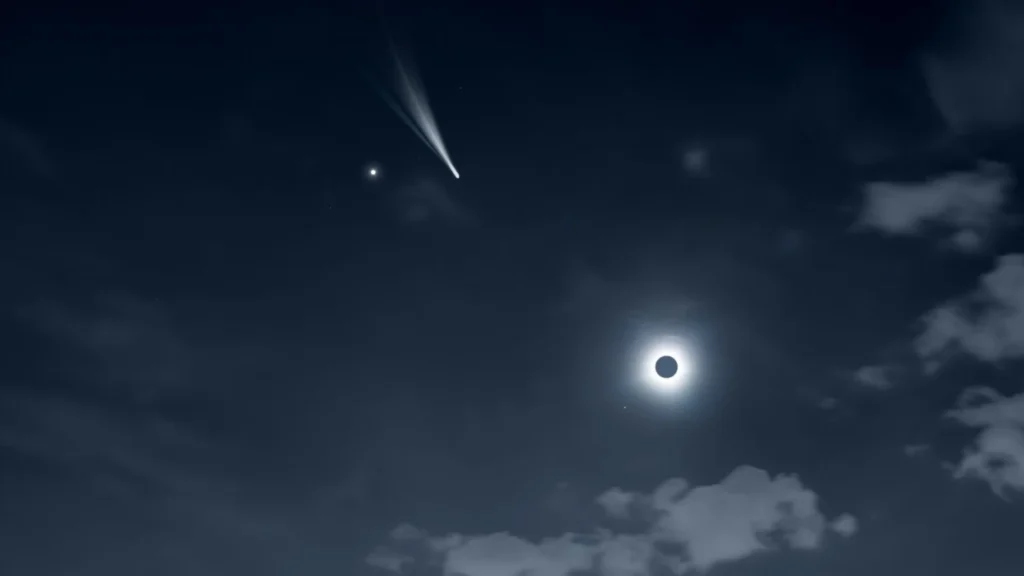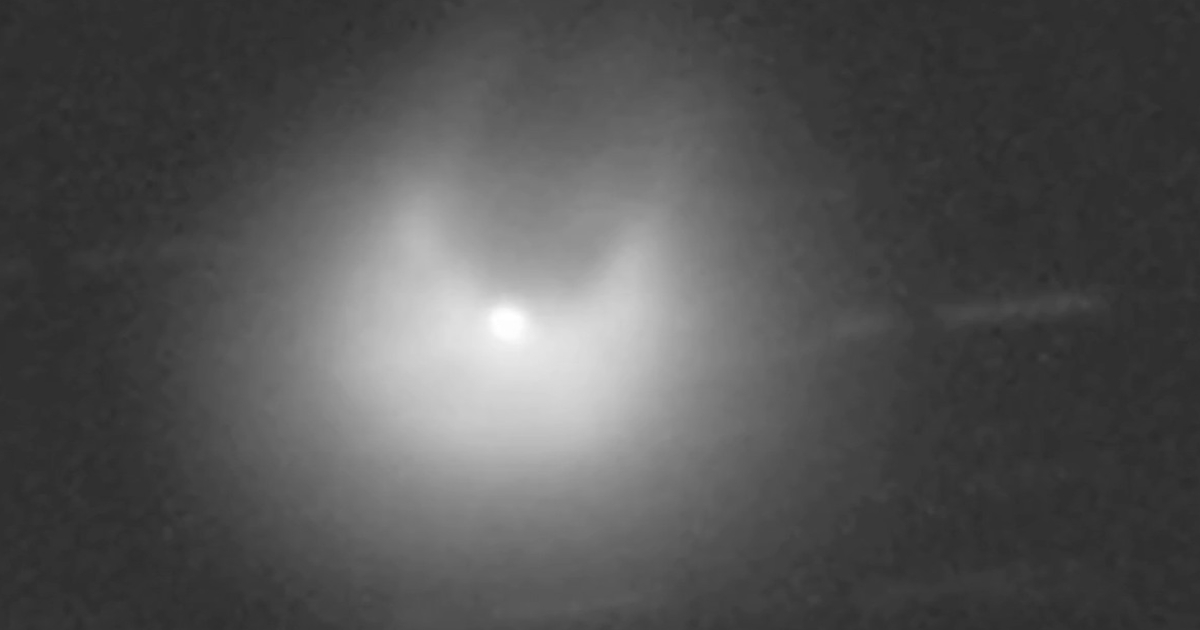Space News: The devil comet, known by many names such as the horned devil comet, the devil comet with horns, the devil horns comet, the explosive devil comet, the mother of dragons comet, or the volcanic devil comet, is a celestial object officially known as Comet 12P/Pons-Brooks.
It is making a return trip to our solar system after 71 years and is expected to reach its closest point to Earth on April 12, 2024.

Why is Comet 12P/Pons-Brooks shaped like a Devil?
Comets, unlike planets, are not entirely solid. As they approach the Sun, the icy surfaces heat up, causing the ice to sublimate (transform directly from solid to gas) and spew gas and dust into space.
In the case of Comet 12P/Pons-Brooks, these eruptions aren’t uniform, and the expelled material can create horn-shaped features within the coma, the dusty cloud surrounding the comet’s nucleus. Comet 12P/Pons-Brooks is called the devil comet because of this horned-shaped feature.
In simple words, the horns are simply an illusion caused by the way the comet erupts and spews gas and dust.
When will the Devil Comet approach closest to the Earth?
The Devil Comet (Comet 12P/Pons-Brooks) is expected to make its closest approach to the Earth on April 12, 2024.
When will the Devil Comet approach closest to the Sun?
The Devil Comet (Comet 12P/Pons-Brooks) is currently speeding toward the sun at around 40,000 mph (64,300 km/h) and is expected to make its closest approach to the Sun also known as Perihelion, between April 21 and April 24.
Will the Devil Comet hit the Earth or the Sun?
The Devil Comet (Comet 12P/Pons-Brooks) follows a well-defined elliptical orbit around the Sun. While elliptical, its path doesn’t bring it close enough to either Earth or the Sun to collide. The Sun’s gravity keeps the comet on course, preventing it from deviating significantly from its established orbit.
What is the orbital period of the Devil Comet?
Devil Comet (12P/Pons-Brooks) has an elliptical orbit. The orbital period of comet 12P/Pons-Brooks is estimated to be around 71 years. This means it takes roughly 71 years for the comet to complete one full revolution around the Sun.
The time it takes a comet to orbit the Sun depends on the comet’s specific orbit. Unlike planets, which have nearly circular orbits, comets typically have elliptical orbits that can be much more elongated. This means their distance from the Sun varies greatly throughout their orbit.
Can we see Devil Comet with the naked eye?
Whether the Devil Comet (Comet 12P/Pons-Brooks) will be visible to the naked eye depends on the intensity of its outbursts. Unlike some comets that exhibit regular outbursts, Comet 12P/Pons-Brooks’ outbursts seem to occur somewhat randomly throughout its orbit.
During an outburst, the comet can brighten by several magnitudes, sometimes becoming visible to the naked eye.
This increase in brightness is caused by the release of gas and dust from the comet’s nucleus. In 2023, the comet experienced several outbursts, including one in July that produced its signature “horns.” This suggests there’s a chance for another outburst during its 2024 visit.
At the moment, only people with powerful telescopes can see it.
Can we see the Devil Comet during the Total Solar Eclipse on April 8, 2024?
Astronomers say that the Devil Comet might be visible to the naked eye during the Total Solar Eclipse on April 8, 2024, also known as the Great American Eclipse, because the United States, Mexico, and Canada will witness the Total Solar Eclipse on April 8, 2024.
What is the Size of the Devil Comet?
The Devil Comet (Comet 12P/Pons-Brooks) is a city-sized comet with the nucleus, a solid core estimated to be roughly 10.5 miles (17 kilometers) in diameter.
What is the Composition of the Devil Comet?
Devil Comet (Comet 12P/Pons-Brooks) is primarily made up of ice, including water ice, carbon dioxide ice, and ammonia ice. Mixed in with the ice are dust particles, rock fragments, and various organic compounds.
Who discovered the Devil Comet?
The comet was first spotted in 1812 by French astronomer Jean-Louis Pons. It was then observed again in 1883 by astronomer William Brooks.
What is the origin of Devil Comet?
Comets are icy remnants left over from the formation of our solar system billions of years ago. They reside in the vast, cold regions beyond the planets. The Devil Comet (Comet 12P/Pons-Brooks) is thought to originate from the fringes of our solar system, a region beyond the orbit of Neptune called the Kuiper Belt or the even more distant Oort Cloud.

Some notable Comets in the Past:
Great Comet (1680):
Also known as Newton’s Comet, this celestial visitor boasted a tail stretching millions of kilometers and was visible for months. It played a crucial role in the development of gravitational theory by Isaac Newton.
Hale-Bopp (1997):
This comet became a naked-eye spectacle for an extended period, captivating the public’s imagination. Its long tail and greenish glow made it a truly unforgettable sight.
Lexell’s Comet (1770):
This comet holds the record for the closest recorded approach to Earth by a long-period comet, skimming by at a distance of just over 2 million kilometers. Thankfully, it posed no threat.
Neowise (2020):
Neowise became a surprise visitor, brightening unexpectedly and becoming visible to the naked eye for a short time. Amateur astronomers and astrophotographers captured stunning images of its dust tail.
Other Potential Visitors:
Several other comets are also expected to make close approaches to Earth in 2024, though some might be fainter. These include comets C/2023 E3 (ZTF) and 73P/Schwassmann-Wachmann 3, offering dedicated observers a chance to spot a variety of icy celestial bodies.
Conclusion:
Comets, icy messengers from our solar system’s birth, intrigue us with their visits. From Newton’s Comet to Hale-Bopp’s spectacle, these cosmic visitors spark curiosity & remind us of our place in the universe.
Their icy secrets hold clues to our past, and their graceful presence across the night sky fuels our dreams of the future. We will witness the magnificence of the devil comet with horns and other celestial objects.
